- 04.0Cover
- 04.1Holding the EarthLois Weinberger
- 04.2How to Read this Broadsheet
- 04.3Still Running WaterGenevieve Robertson
- 04.4Energy SeriesLaurel Albina
- 04.5Embracing an interdisciplinary approach to plastics pollution awareness and actionSynthetic Collective
- 04.6Antarctica: a Chromatic ParadoxSkye Morét
- 04.7Gas StationRuth Beer
- 04.8The State of EnergyJessica Caporusso
- 04.9Observing our Changing Atmosphere from the Northern Edge of the Canadian ArcticDan Weaver
- 04.10Shorelines and other imagined spacesAlison Cooley
- 04.11What is Innovation?D.T. Cochrane
- 04.12Just VerticalFraser McCallum
- 04.13Local Useful Knowledge: Resources, Research, Initiatives
- 04.14Glossary
Observing our Changing Atmosphere from the Northern Edge of the Canadian Arctic
- Dan Weaver
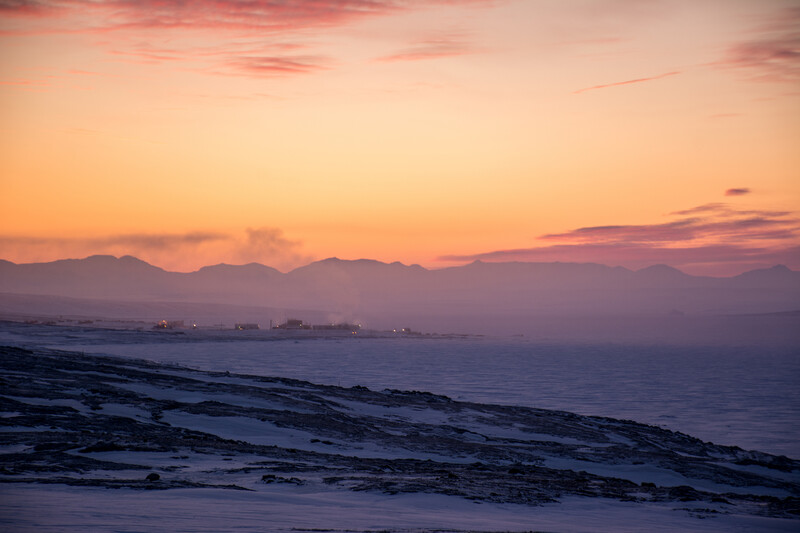
Eureka, Nunavut at sunrise
Eureka is a remote, high Arctic research outpost located on Ellesmere Island, first established in 1947. At 80°N, it is one of the most northern, continuously occupied places in the world. The environment is extreme. Temperatures can be as low as -50°C during the winter and as high as 10°C during the summer. Between mid-October and mid-February, there is no sunlight at all (polar night); from mid-April to the end of August, the sun never sets (midnight sun). Several full-time staff work at the site all year round, typically staying for a few months at a time. In addition to conducting meteorological measurements year-round, the site supports government and academic researchers on a campaign basis.
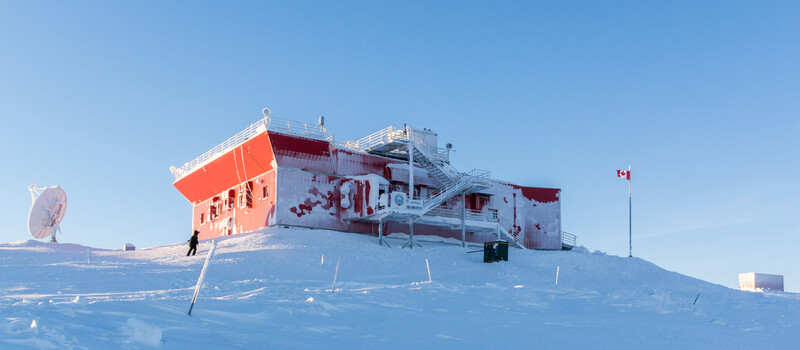
The PEARL Ridge Lab
The Polar Environment Atmospheric Research Laboratory (PEARL) is the most northern atmospheric observatory of its kind (80°N). PEARL hosts dozens of instruments across three main facilities. The Ridge Lab sits atop a ridge at an altitude of 610 metres, approximately twelve kilometres from Eureka, with a spectacular view of the surrounding landscape. It was originally built by Environment Canada in the early 1990s as the Arctic Stratospheric Observatory (AStrO), but its operation was ended in the early 2000s. A group of academics (CANDAC) revived the lab in 2005 and re-opened it as PEARL. The datasets produced by PEARL measurements contribute to a variety of global measurement networks that study, for example, the carbon cycle, ozone depletion, the water cycle, air pollution, and aerosols.
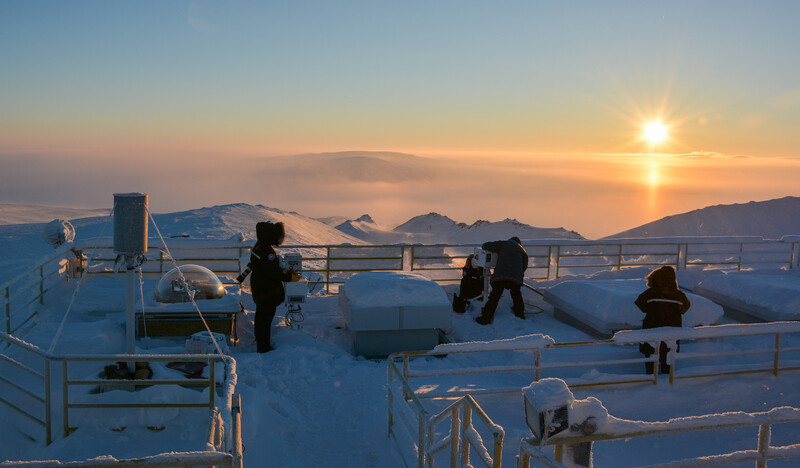
Installing rooftop atmospheric instruments at the PEARL Ridge Lab
A team of Canadian scientists install instruments on the roof of the PEARL Ridge Lab in late February.
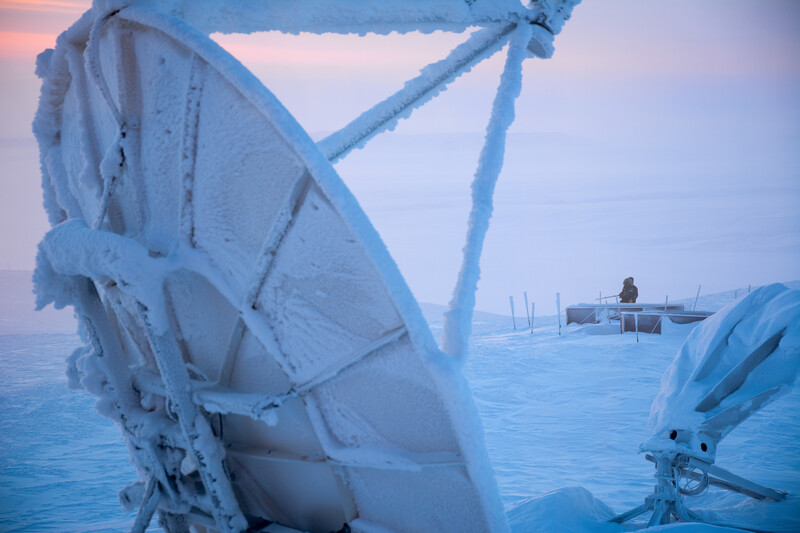
Isolation and connection
A scientist walking near the PEARL Ridge Lab. The satellite dishes in the foreground provide a communications link between the remote PEARL facility and the rest of the world. The connection speed is limited, so its use for data transmission and personal communication is carefully rationed.
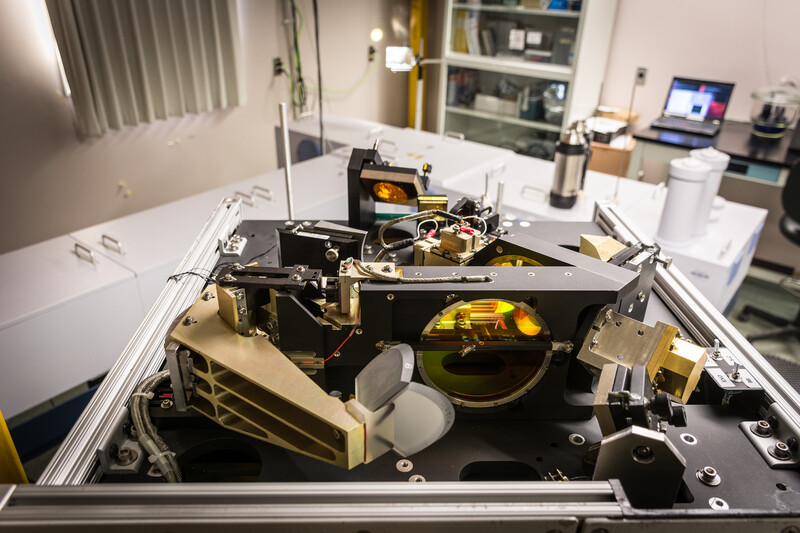
PEARL infrared spectroscopy lab
The internal components of the Portable Atmospheric Research Interferometric Spectrometer for the Infrared (PARIS-IR) are visible while its cover is off during the setup procedure for a measurement campaign at the PEARL Ridge Lab. An instrument identical to PARIS-IR is on board the Atmospheric Chemistry Experiment (ACE) satellite, which was launched into Earth’s orbit in 2003. The ACE instruments were designed and built in Canada. They acquire measurements of dozens of atmospheric gases to study the chemistry and composition of the atmosphere.
The instrument in the background is a permanently installed, high-resolution Fourier-transform spectrometer that gathers measurements of atmospheric composition by observing sunlight directed into the lab using a tracker on the roof.
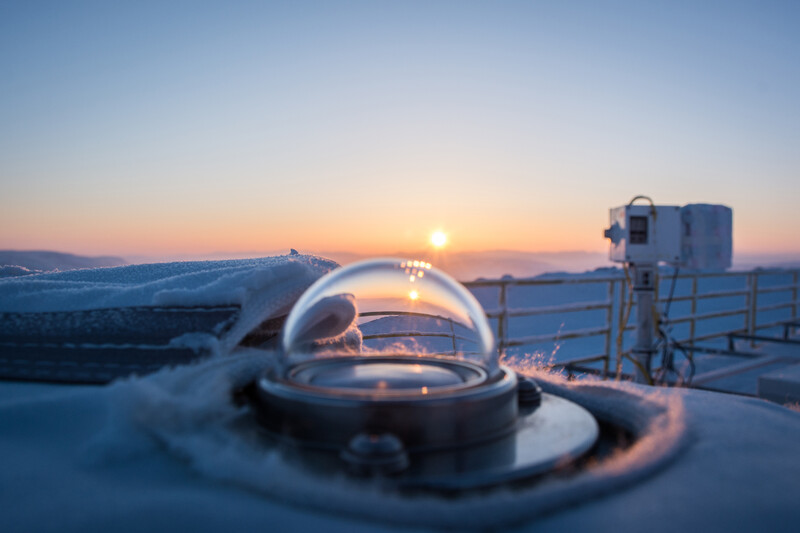
Science through sunlight
The dome of a Brewer spectrophotometer, a Canadian-designed instrument used to measure atmospheric ozone using observations of UV light. They are deployed world-wide to monitor the ozone layer, as well as SO2 and NO2.
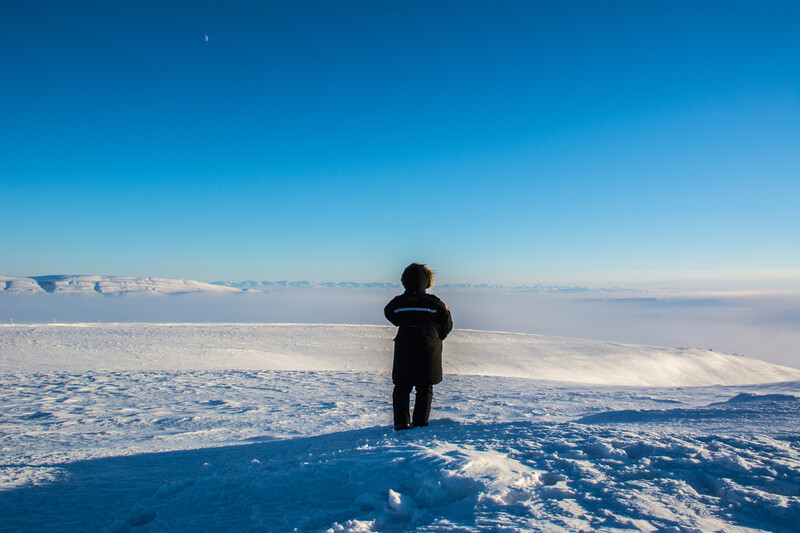
Moments of reflection
A PEARL researcher takes a moment to look out on the stunning Canadian Arctic landscape near Eureka. The high Arctic’s environment is expected to change significantly due to climate change.
See Connections ⤴